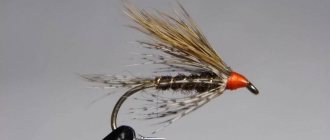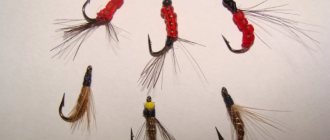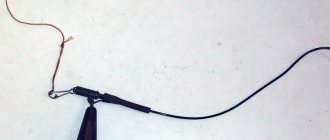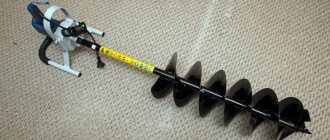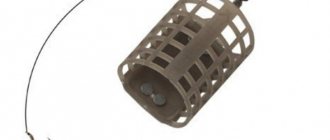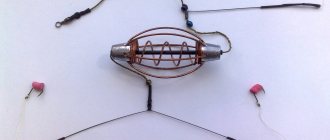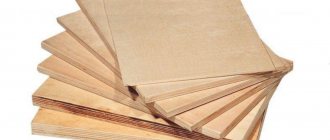- the use of lead wire to weigh the bait to the required degree, which ensures high-quality diving;
the use of rudimentary wings in the image (bird feathers are used for these purposes);
According to a survey conducted among fishermen, the nymph made in a gray palette showed the greatest efficiency. It is recommended to use bait in late summer and late fall.
Do it yourself
If desired, artificial bait can be easily made at home. In this process you cannot do without the following materials:
- vice;
- pen holder;
- scissors;
- knotweed;
- a set of needles;
- bobbin thread holder;
- threader;
- tweezers;
- brushes for painting with paints or varnish base;
- hooks;
- mortars;
- lamps;
- mirrors;
- magnifying glasses;
- mounting thread;
- feathers (preferably rooster);
- dabbing;
- wool and lurex
.
Making a dry type fly
For DIY production, it is recommended to use bright orange and black hairs about 5-6 cm long.
BAIT for GRAYLING! FLIGHT WITH YOUR HANDS
Greetings to subscribers and guests!
Today we will make a very cool and catchy bait for grayling!
In my opinion, this is
the best fly for catching grayling!
If you don’t agree and have experience with other proven flies for grayling, write in the comments.
Let's get started.
By the way, at the end I’ll show you what the fly looks like when wet. We will need a hook number 12, with a jig.
We immediately begin to form a bright point of attack using a red mounting thread. We fasten the thread as in the photo.
Now you need to saturate this place with varnish so that this “butt” does not come apart. We missed the thread a little while approaching the fore-end and began winding.
You can make the attack point of any size at your discretion, but it is better not very large, neat.
After winding, we make a knot and cut the thread. This is what happened.
Next you will need an orange thread. We attach it to the forend.
The next important material that we need is felting wool. You can easily find it in sewing stores. It can also be replaced with anthrone, but the effect will be completely different.
Cut off a bunch of wool. Before winding, remove excess fibers from the wool. Using two fingers, squeeze and stretch the wool; the excess, unstable material, will come off.
Now the wool needs to be secured to the hook. We don’t just wrap it somewhere, but kind of wrap the shank of the hook in wool.
We do not wrap the thread as usual, but make a spacious loop as in the photo.
Then we begin to tighten so that the wool is evenly pulled together on all sides. It is important.
Well, now we wind the thread to the “butt” where we have already made the point of attack earlier.
We trim off the excess hair from the ear side.
Now you need orange dabbing.
We wrap a thin layer of dabbing onto the thread and wrap it.
The dabbing winding goes to the place as in the photo.
Now let's get back to wool. We cut it approximately as in the photo.
The wool needs to be fluffed with a needle, scissors or something else.
Now we evenly push the fluffy wool towards the eye of the hook, so that the wool is on all sides in a circle.
We hold it and make a couple of windings.
It is important that the resulting body be as fluffy and free as possible, so that it is not pressed against the fore-end.
If necessary, rub it with two fingers, slightly pulling the wool towards the bend of the hook to create a lush cocoon as in the photo.
Afterwards we wind it well and trim off the excess wool.
Next you will need one beard of a peacock feather.
We fix it where we made the orange head, immediately after soldering. We don't touch the wool.
Having secured the feather, we begin to make a winding, filling all the empty space between the soldering and the beginning of the wool cocoon.
After winding the feather, we fasten it with thread and cut off the excess feather.
Now put a couple of drops of varnish on the feather and wet it completely. We don't touch the wool.
Next you will need a partridge feather.
We pluck it at the base, making a clean place for winding with thread. Anyone who has read previous articles about flies has seen how this is done. We fasten with thread to the peacock feather.
And we begin to wrap the partridge feather around the forearm.
We secure the feather with thread, cut off the excess feather, make a knot and cut the thread.
Now we saturate the thread head with varnish.
A proven, catchy bait for grayling is ready! DON'T GO, look further at what the fly looks like when wet.
Soak the fly with water.
When we soak it in water, a color change occurs and the fly is transformed. The color becomes completely different plus the effect of depth, the red point of attack is clearly expressed. A partridge feather in the water will continue to bend as it flows. Grayling can't resist!
Check out the list of interesting articles below.
Thank you everyone for your time.
No tail, no scales.
You can make a nymph yourself or order it - here
If you haven't subscribed yet
,
SUBSCRIBE so you don't miss anything!
Description and behavior characteristics
Graylings are related to salmon and whitefish species. There are three main ones: European, Siberian, Mongolian. Prefers reservoirs with low temperatures and rocky bottoms.
It is distinguished by a powerful fin on its back, colored with spots and stripes of bright colors. The body is covered with large scales on the back and small scales on the abdomen. Its coloring is motley, attractive, its back is covered with many spots.
It is quite difficult to notice it in the water, because it itself is grayish in color, and therefore blends in with the bottom. Usually no more than a kilogram is caught, but it can weigh up to three.
There are also frequent cases when more than seven were caught feeding on:
- Shellfish.
- Larvae.
- Midges that fell into the water.
- Grasshoppers.
- During spawning, it does not refuse the eggs of other fish.
- Large specimens destroy the fry.
- But my favorite food is caddisfly, sometimes stonefly.
It is very agile; in calm and warm weather, you can see how it jumps out of the water and sometimes very high, catching ungainly insects. When it senses danger, it immediately sinks to the bottom. It is active only during daylight hours and feeds only during the day.
Lives in small flocks until the time prescribed by nature. When they grow up, they get their own. Young individuals mainly live in shallows, while older ones, on the contrary, prefer deep holes.
But this is only in the warm season, and in winter they go to great depths. In the spring they rise upward and swim alone, in search of a mate, standing out with a rather bright color.
Killer of Grayling Mushka
The fly is the “killer” of grayling.
This fly is a grayling killer. Catches fish very well. She's my number one favorite. The fly is very easy to tie.
Grayling killer. Do-it-yourself flies for catching grayling.
Flies for catching grayling with your own hands You can order flies, sinkers, jig heads here. https://vk.com/fishing42reg.
Grayling killer fly.
Fishing on Ussuri with this fly.
.
Killer fly for Grayling - “Sakasa Kebari”
Killer fly for grayling, excellent bait for fishing with Tenkara, Fly Fishing, Reversible Boat, Fishing.
THE SECRET OF A CATCHABLE FLY FOR GRAYLING AND LENK. With my own hands.
Hello dear viewers of my channel! In this video I will show you how to quickly tie a catchy fly.
This nymph will mow down all the grayling! Siberian snot in a new way! Front sight Mower
So how? Did you get a good fly? ——— Order my flies and materials https://sibirskylov.ru/ Renzetti vices and materials at a discount.
Grayling killer fly.Ice Dub uvi Tan
Lenk killer fly.
In all my videos, I catch lenks with this fly. https://www.youtube.com/watch?v=RhNVl0eujaE This video features a clip about this fly.
Fly for grayling. FAVORITE of the season! Non-standard method
In this video I will show you an unusual way of making a fly body. As for me, the effect is simply BOMB.
Fly for grayling
We tie flies for catching grayling. Every fly fisherman has his favorite flies that catch practically.
Which NYMPH FLY does GRAYLING bite on in WINTER? (LEMON BOMB)
Making a WINTER TRASHING NYMPH for GRAYLING - step-by-step production. What sets are there on HARIUS https://www.yo.
100% Hit on Grayling/Mukha-Otryva Boshki/Rural Punk!
I'm sure you'll appreciate it! The resulting effect will 100% interest most fish! #Mushka.
Flies for grayling, flies for grayling, review
All videos were shot in high definition with a resolution of 1920*1080 50p SUBSCRIBE TO MY CHANNEL https://www.youtube.com/channel/UCqS98UJK.
Siberian FLIES on HARIUS - audio cassette USSR (Sector-GAZA)
SET OF FLIES with BONUSES https://www.youtube.com/channel/UCzOh_fvpmvZSxwdw21Rw-vg?disable_polymer=true my coordinates are VK.
Fly on grayling, lenka. NEW CARROTS. SUPER FLY.
I checked the fly, it works great. There are many other flies in my collection. If anyone is interested in which ones I fish for, etc.
HARIUS does not spit it out. NYMPH-DECEPTION for WINTER!
Winter TRASHING decoy nymph. Sedna did a fishing trip for me! Using sets of FLY FLIES here: my coordinates-.
NYMPH for GRAYLING-trapping AUTUMN (Caddfly house-TWIST)
Friends, be sure to try this and try to catch grayling with it. This nymph came to the rescue more than once.
Secrets of catching grayling. How to tie catchable flies?
Today we met with a professional fly tyer and will tell you how to tie catchable flies on.
How to tie a fly LESSON 8 (SECRET FLY or KILLER FLY)
How to tie a fly LESSON 8 (SECRET FLY or KILLER FLY). Dedicated to all lovers and connoisseurs of fishing.
Weaving a fly for Lenk and grayling.
Subscribe and like if you liked it) 100 likes and there will be a continuation.
ISSUE No. 11 Front sight for Grayling and Lenk “Combined OLIVE”
Vladimir Minin demonstrates the technique of tying flies for catching grayling and lenok on the rivers of the Khabarovsk Territory.
© Siberian #fly / #color decoy - Panasonic.
Siberian #fly / #color decoy - “#Panasonic”. Making a coloring solution of color - “Panasonic”, coating.
NYMPH-DECEPTION for GRAYLING (Lovchaya, June-Black)
The bait works flawlessly, especially in June. my group and VK https://vk.com/club175359757.
Fly for grayling.
Super catchy dry fly for grayling
A super catchy dry fly for grayling is easy to tie. The fly is quite catchy. The front sight belongs to the series.
Cool fly for grayling. Fly "Socks"
I decided to open a new playlist about how I make flies for grayling. I will only make flies that are biting.
++Knitting karakat flies for catching lenok and grayling++
Tying a karakat fly for catching lenka and grayling. Website - https://25medvedey.ru/ Forum - https://forum25medvedey.ru/ Materials, recommendations.
Technology for making braided flies. Types of weaving.
In this video, I filmed the basic types of weaving for making braided flies. I deliberately omitted the form stage.
,,BRAIDED FLY,, Perekolomina-Vesnyanka for LARGE Grayling, Link (threads of the RSFSR 82 - homemade)
A bit of underwater filming, the production of a BREAKLINE CATCH (threads from a garment factory in 1982, BOLOTNAYA-KORICHNEVA.
Fly Test in Winter. Grayling, Taimen on Thongs and Tights!
Well, I finally got to winter fishing for grayling! A fairly detailed film about our three-day trip.
This working fly saved my fishing trip. Catching grayling in the spring on the Yenisei River with a Tyrolean stick!
Hi all! Another trip to the Yenisei took place! Although the fishing turned out to be not entirely productive, it was...
flies for grayling (hunting options)
A short review of flies that are consistently catchable.
Weaving fly tying for beginners how to make fishing flies for chub trout
Fly tying for beginners. How to make fishing flies for chub, trout, perch.
Fly fishing and fly tying from Danilych - The best autumn fly for grayling. Emerging mayfly.
New video about the current fall fly, the cripple dun (pop-up mayfly). For fishing grayling on small rivers.
Fly for whitefish and grayling
Tying flies Flies for fly fishing Caddisfly An easy-to-make fly How to tie a fly Flies Fishing for whitefish.
MANUFACTURING BOTTOM FLY FOR GRAYLING AND LENK.
Dry fly for grayling fishing.
Dry fly for grayling fishing. You can order flies, sinkers, and jig heads here. https://vk.com/fishing42reg.
DIY flies for catching grayling
Flies for catching grayling with your own hands You can order flies, sinkers, jig heads here. https://vk.com/fishing42reg.
Catching grayling with a riding fly. The devil knows where, of course!
The hardest thing was not to catch the fish, but to film the bite of the riding fly! We have already fished on this river.
Secret fly for grayling. Micro String Chenille
The fly from this chenille was indeed “secret” in my box. Due to a shortage of material, I could not do it.
How to tie a fly LESSON 1 (how to get and attach the mounting thread)
How to tie a fly LESSON 1. In the first lesson I will tell you how to attach the mounting thread and where it is almost free.
The best fly for grayling is “Maggot”. Everyone will do it. Along small rivers
The simplest and most catchy fly for grayling. Imitation of maggot. The fly is made from the mother's scraps.
Testing Front sights. Belka fly test. Catching Grayling with a Fishing Rod
Video on making this fly: https://www.youtube.com/watch?v=l6tc00CC8nM&t=2s ——— Order my flies and materials https://sibirskylov.
Fly on the Tee, the most catchy for Grayling
A film on tying a “CATCHABLE” fly for GRAYLING on a treble hook No. 18, which is soldered from 3 single hooks.
VIDEO LESSONS FLY TYING FOR GRAYLING 2
HOW TO TIE A FLY FOR A GRAYLING MAYFLY. PRACTICAL VIDEO LESSONS. I'm in contact https://vk.com/id145634223 follow mine.
Fly for 2021 Grayling. Braid in a new way. A scam for the entire season.
One of those Flies for Grayling that always works. It looks like a regular braid but with some minor additions.
Fly for catching grayling.
Tying flies for grayling. what kind of flies should you tie?
We tie flies for grayling, fishing, fishing Krasnoyarsk.
Tying a fly for grayling – Extended body magic
Hello friends! We are tying a wonderful bait again, this time for grayling! The front sight is quite simple, but it is there.
Grayling's favorite fly
Our author Vladimir Zuev from Yekaterinburg demonstrated how he ties top flies for grayling fishing.
02/25/2020 Napoli - Barcelona - 1:1. Review of the 1/8 finals of the Champions League
#Musicality - Zhanna Aguzarova and Tima Belorusskikh
The wildest review of NIVU 2021 - a possible project?
BTS Carpool Karaoke
URGENTLY! 02/26/2020 RUSSIA HAS PREPARED PLASMA SURPRISES FOR ERDOGAN
I'm a mother. Male / Female. Issue dated 02/25/2020
JONY - Comet
My School Stories 4 (animation)
Series. My area. Season 2 Episode 3 | Adventure Comedy
Tanya will sew mittens
How Vlad Listyev created new television, which killed him
60 minutes hot on the trail from 02/26/2020
WoT Blitz. New Event! Spring warm-up
Electric minivans on the car market 2021, PRICES VIDEO green corner
LOBODA - New Rome (video premiere, 2020)
Do you want to have a good time watching videos? On our video portal you will find videos for every taste, funny videos, videos about animals, video broadcasts and much more.
How to tie flies for grayling video
Step one. Materials
To make a “Young Pioneer” fly we will need: a car or railway worker, a traffic police officer, a Young Pioneer and a chicken.
First of all, you need to make an acquaintance with some traveler. His orange vest, which is called “jaundice” in local slang, has a special piece inside for flywraps. It will be useful for making an asshole (imitation of an ovipositor).

For the head, you need to agree with the traffic police officer about a piece of his lemon-lime signal vest, called “greenback”. If you conduct a conversation correctly when stopping a vehicle, then a piece of the vest is yours.
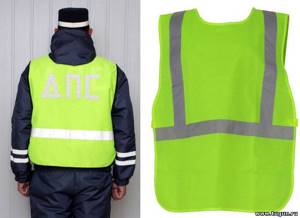
The body is made from the St. George ribbon, which young pioneer women usually distribute free of charge to everyone on Victory Day on May 9. It happens that they even forcefully impose it together with traffic police officers, stopping passing cars, so here you can kill two birds with one stone.
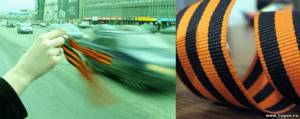
The requirements for feathers, like everything else, are low. Any red hen or rooster will do.
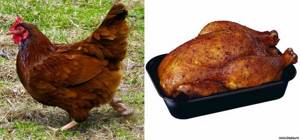
That's all the materials needed to make the front sight.

Step two. Manufacturing
Let's get started. We fasten the mounting thread, the track for making the butt.
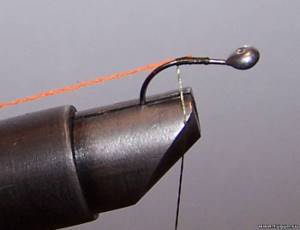
We're not making a very big mess.
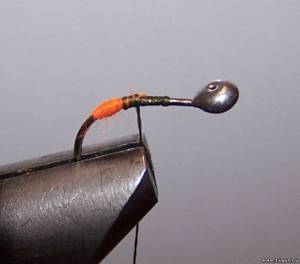
We attach two St. George ribbons of the young pioneer to the sides of the body, orange on one side and black on the other.

We remove the excess. We form the base of the body of the fly and cut the mounting thread.
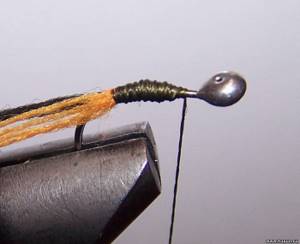
Next you need to weave the body of the fly.
To begin with, we make a regular knot from the two ends of the ribbon, tightening it in front of the butt.

We knit the next knot. The color that comes from the bottom of the knot goes on top of the hook.
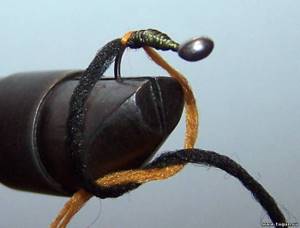
The whole body is knitted in a similar manner, alternating colors.
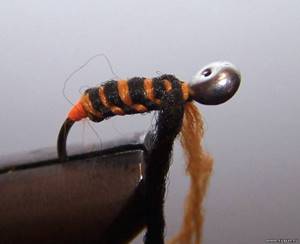
Having secured the body with the traffic police “greenback”, we come to the pen.
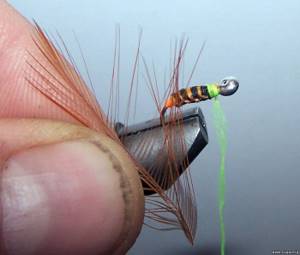
We tie the feathers with the tips outward and cut off the tails.
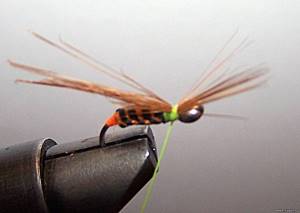
Then we bring the tips back, secure the head and the “Young Pioneer” fly is ready.
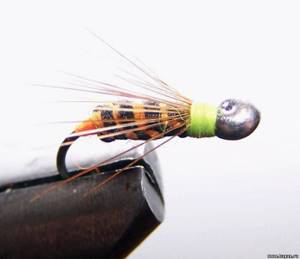
Step three. Trial
We go fishing, set a fly, catch a lot of grayling and treat everyone.
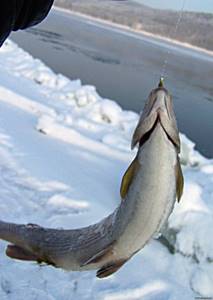
PS To make the most budget-friendly version of a fly catcher, only one, even not very young, pioneer/Komsomol/non-party girl will be enough. Preferably a redhead
Catching grayling with a fly
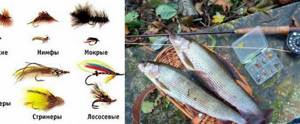
Fishing is a spectacular and exciting activity, since the entire process is carried out with direct contact between the fisherman and the tackle and fish. In order for the activity to have at least some success, you should know some of the subtleties of catching fish with a fly, and especially grayling.
In the spring, when we can safely say that spring warmth has arrived, a wonderful time for grayling fishing begins. In the summer, the grayling bite is not so active, since it has the opportunity to feed on insects that fall into the water, but at the end of summer, in August, active hunting for grayling begins again. This period can last until October.
Advantages and types of flies
Such an artificial bait as a fly undoubtedly has many advantages that determine the advisability of their use: 1. Versatility for fish. The same fly can tempt both small chub and grayling, and large lenok and taimen.
2. Possibility of use with different gear such as boat, drag, fly fishing, bombard, spinning.
3.The compactness of the bait allows you to use small pencil cases and boxes that do not take up much space during storage and transportation.
A small box holds a large number of flies.
4. Low cost of ready-made baits.
5. Possibility of self-production and tying of flies, due to the variety of materials used and their low price.
6.Easy installation of the bait, tying the fly is as easy as a regular hook.
7. If a fly is made with high quality, it can serve the angler for many years. There are no special storage requirements; the main thing is to thoroughly dry the bait to prevent corrosion of the hook.
Flies are divided into two large groups according to their application:
- dry,
- wet.
Dry baits are those used for fishing from the surface of the water; they are also called riding baits. They imitate insects that have fallen into the water: flies, butterflies, bugs, dragonflies and others.
Wet, or bottom, baits are heavier than water and are carried in the lower horizons of the water flow. Beetles, caddis flies, larvae and pupae of insects are the objects of imitation of this type of deception.
Our help! Some insect larvae are called nymphs, so this has become a common name for wet flies.
Tackle
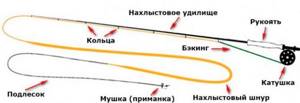
Grayling is caught with fly fishing gear, which usually includes a bit, reel, line and bait, but it is quite possible to use other gear.
- Widely known fly fishing , which requires special gear and the ability to cast bait correctly and accurately.
- Semi-fly fishing . This is gear designed for retrieving and consists of a spinning rod, an inertial reel that has smooth operation and a heavy float of the “Sbirullino” type. With the help of such a float you can make long casts. For the main fishing line, a fishing line with a diameter of 0.25-0.3 mm is selected, and the leashes are made from fishing line with a diameter of 0.18-0.2 mm.
- Ship or “sleigh”, “torpedo”, “kite”: these are the popular names for this tackle. The basis of such gear is light, floating material. You can find both single-hull and double-hull versions of the boat. To control the tackle, you need a rigid spinning rod equipped with an inertial reel on which a fishing line with a diameter of 0.3-0.4 mm is wound. Leashes must be of different lengths so that the flies are on the plane of the water.
- Constriction . You can also recognize the name of this gear as “baler”. To control the bottom gear, two fishermen are needed, who must be on opposite banks at the time of fishing. In the hands of each fisherman is a spinning rod connected by a common fishing line, 0.2-0.3 mm thick, on which there are up to three leashes, about 1 meter long. In this case, one fisherman catches the fish, and the other fishes out the fishing line: the fishermen must agree on this in advance.
Types of gear for fishing grayling
The following varieties exist:
- Ship or "Water Serpent" . It consists of a lightweight material (foam plastic, plywood, etc.), a fishing line is tied (this is called a “bet”) and several leashes are attached. The main line is tied to the opposite side. You need to cast it as far from the shore as possible, so that it floats freely with the current.
- "Drag". Consists of a pair of spinning rods located on opposite banks. In the middle they pull a “bet” with leashes. You need to move slowly along the shore, always against the current.
- Fly fishing. A classic variation consisting of a special rod with a long cord and a leash. Perfectly helpful in any situation.
- Spinning. Simple, especially common and productive.
Fly fishing
Fly fishing is a special technique of fishing above water, using:
- Marked.
- Long casts.
This means that the art of hunting consists of a very realistic presentation of the bait and its retrieval. You can do:
- Close ones.
- Distant casts.
It all depends on the specific situations. You need to make sure that nothing interferes with the movement of the fly downstream. This means that she will be able to swim calmly without arousing any fears in the grayling.
The time for cutting can only be guessed visually. Even after catching it, it behaves very quickly, so there is no need to speed up the fishing. Consists of:
- Fishing rod (with inertial reel).
- Cord with backing, running and leash.
- Nozzle.
Semi-fly fishing
Presented as wiring accessories. The spinning rod is equipped with:
- Inertial coil.
- Float, sinker.
The float is necessary only for casting, and is not intended as a bite alarm. Main line:
- Diameter 0.24–0.3 mm.
- Short leashes are made from fishing line 0.18–0.2 mm.
Ship
Made from:
- Weightless, floating materials.
- The structures are made with one or two bodies; Only a rigid, spinning fishing rod is used.
- Line with a diameter of 0.4 mm.
- The coil is inertial.
Retightening
This method of fishing is very interesting. Two fishermen should position themselves on opposite banks of the reservoir:
- First, you need to connect two fishing lines (0.25–0.3 mm) together and tie two or three leashes with a fly about a meter in length.
- You need to keep the line taut all the time, without bending.
- The work will consist of periodically luring the fish, forcing it to bite.
- When she bites, the hook is performed synchronously.
- They agree in advance that one should fish, the other should bait the line.
The best flies
Red Ant flies are considered one of the best, although there are other models that are also great for grayling. Among the large variety there are the most catchy models.
Red Ant flies
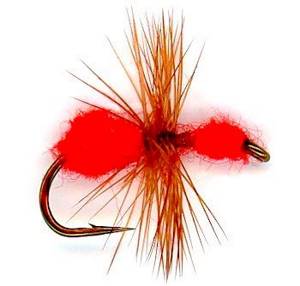
The basis of these flies is hook No. 18-No. 14. For the brush of this fly, a rooster feather of a reddish or black color is taken, and the front and back parts are made of red dubbing. The mounting thread and the front sight head are black.
Hydropsyche Nymph
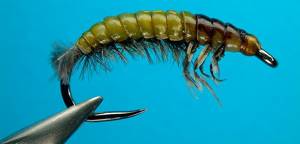
This fly can imitate a caddisfly and has a fairly realistic appearance. This fly will take the second pass, but it will definitely bite. In this case, quite large specimens come across.
Deerhair Caddis front sight
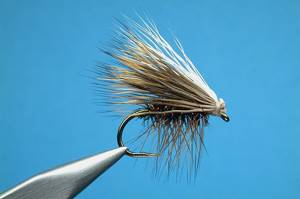
This fly is mounted on a hook number No. 16-No. 10, with black thread using a red or black rooster feather. The wing is mounted from deer hair, and the body contains dubbing of various colors. Grayling bites on this fly on the first cast.
Top 5 flies for grayling
What flies are the best for hunting and, moreover, really catchy?
Usually used:
Loop Wing Emerger. Excellent copies of small midges and mayfly larvae. Acts on the surface of the water, in the manner of an Emerger. Perfectly performs the role of a full-bodied nymph.
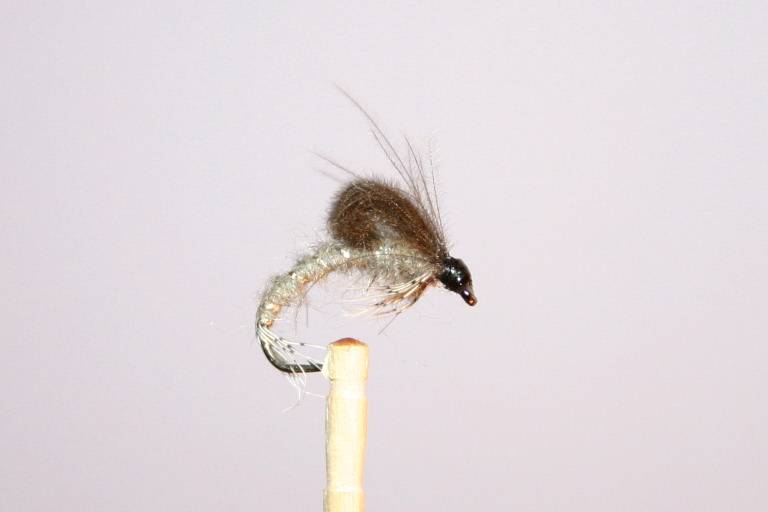
Superpupa. This species belongs to the dry fly. It will become an effective bait for the entire hunting season. They are knitted mainly on hooks No. 11-17, and it would be useful to treat them with a special lubricant for additional buoyancy. It looks a little like a disheveled broom, but the grayling goes for it willingly.
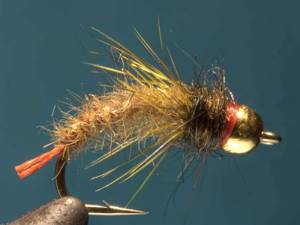
Hydropsyche Nymph. The bait stands out among others due to its realism and imitates a caddisfly. If the fish is interested, but pricks, the fly will certainly work on the next retrieve and bite again. Large specimens are particularly well caught.
March Brown. This model is equipped with gold-plated ribs. Among all the variety, this attachment has proven itself to be one of the best. It has been used for more than 400 years, and during all this time, it has given fishermen only excellent catches and good luck.
Jassid. It was invented and brought to life by the American Vincent Mariner. He described it back in 1950. Its appearance is quite simple, but it is perfectly visible in the water. And this is important for the fisherman, and also stands out for its great catchability. You can rely on her, and she will never let you down.
Wet flies
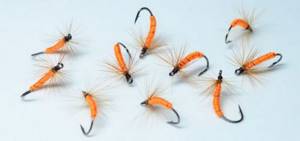
These flies can imitate nymphs that are in the middle layer of water or directly at the bottom. To use sinking flies, sinking lines are used. You'll have the best luck with taupe-colored flies that imitate mayflies and nymphs.
- You can pay attention to the wet flies Hasenohr and Marchbrown, which have ribs “like gold”.
- The rainbow specimens Butcher and Peter Ross, made on hook No. 14-No. 12, performed well.
Dry flies for fly fishing
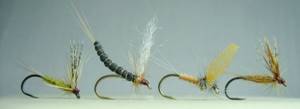
With these flies it is possible to catch grayling at any time, from spring to late autumn. As a rule, fish constantly feed on insects that somehow ended up in the water.
- The Superpupa dry fly, made on hook No. 16-No. 12, performed well. It is additionally treated with lubricant, which makes it especially buoyant.
- In autumn, grayling takes well with a CdC-Dun fly mounted on a hook No. 18-16 using duck tail feathers.
- In caddis-dominated rivers, a Buck Caddis dry fly can be used.
- Various mayflies are imitated by a Parachute Adamc dry fly tied on a #16 hook.
Types of flies for grayling
The following types of flies are actively used in grayling fishing:
- Wet type - considered a classic type of bait, vaguely reminiscent of a water insect, larva or water beetle. Distinctive features of the product are:
- a small amount of plumage;
Possibility of tying on heavy type hooks;
- the use of metal wire to provide additional weight;
- maximum effectiveness of bait when fishing in deep areas of the reservoir;
- Can be used for fly fishing.
- Dry type - imitates a bumblebee, wasp or dragonfly that has fallen into the water. The bait is quite light and is used for fishing from the surface of a reservoir. Manufacturers produce flies made from feathers, fur or bristles. The presence of voluminous fluff allows the flies not to get wet and remain on the surface of the water even in the presence of a strong current. The distinctive features of the dry product include:
- realism of the front sight (such characteristics can be achieved by using a large number of materials in production);
the use of thin hooks when knitting, which ensures the lightness of the product;
- The high level of effectiveness of the bait is explained by the fact that grayling often floats to the surface in search of food.
- Nymph is no less popular type of bait than previous varieties. The fly most accurately copies the image of a small insect at the stage of underwater development. The main features of the product include:
- the use of lead wire to weigh the bait to the required degree, which ensures high-quality diving;
the use of rudimentary wings in the image (bird feathers are used for these purposes);
- knitting the legs of a nymph from the neck feathers of a chicken (it is very important not to build them very tightly, but to fasten them with glue).
You can achieve maximum effectiveness of the fly when fishing in deep water areas. The most popular among fishermen is the gray-brown palette of products, which provides an increased level of bite.
The dry type of flies brings maximum effectiveness in the autumn. Fishermen noted the greatest effectiveness of bait made from duck feathers.
According to a survey conducted among fishermen, the nymph made in a gray palette showed the greatest efficiency. It is recommended to use bait in late summer and late fall.
DIY fly tying
The effectiveness of fishing depends on how plausibly the fly imitates various insects. This means that only fly tying masters who have a creative approach to this important process can count on this. Many anglers tie their own flies. For this you need the following materials:
- Various bird feathers.
- Threads.
- Copper wire of suitable thickness.
- Goat hair.
- Various fur of fur-bearing animals.
- Glue.
- Cork.
- Beads and seed beads.
- Good quality hooks.
For this you will also need the following tools and accessories:
- Special clamp or vice.
- Tweezers.
- Scissors.
- Knotted.
- Lighter.
Fly fishing technique
Fly fishing technique consists of accurately casting the bait and retrieving it accurately. Both short and long casting of the equipment is possible. In this case, it all depends on the fishing conditions. You should very carefully monitor the flight of the fly and its movement in the water. The main thing is that nothing slows it down while moving, especially a fishing line or cord. The moment for hooking can be determined visually, since everything happens in plain sight, on the surface of the water. Grayling is not that large in size, but it resists quite strongly, so you shouldn’t rush into fishing, you need to wait a little.
This type of fishing is interesting because it reveals the professional capabilities and skill of the fisherman, which is not given to everyone. This skill is especially evident in the manufacture of flies. This process is very long, and as a result of creative searches, sooner or later, the fisherman will produce his own designer fly, which actively catches grayling or other fish.
Fishing for grayling in summer video
Grayling belongs to the category of cold-loving freshwater species.
As soon as the heat sets in, the fish move to cooler places located at the farthest tributaries. The optimal habitat for this species is a shallow section of a river with a predominantly rocky bottom. Grayling also loves secluded corners under an overhanging bank.
As for nutrition, grayling prefers invertebrates, various insects and other representatives of the animal world that fall into the water.
Grayling moves around its water area, simultaneously studying its surroundings. This is his obligatory ritual before stopping to rest.
If you take into account the characteristics of the areas where grayling is located, it is easy to notice it by its characteristic breakers. They appear when the fish jumps for food.
Accordingly, the place for casting the bait is determined. Don't neglect other fishing areas located below waterfalls and near raging riffles.
There is a kind of fish feeder made from various food scraps thrown into the water. In these places it is recommended to catch grayling using live bait, worms and flies. Many fishermen note the exits of the rapid current onto the reaches. Fish schools often check accumulated river debris in these places.
Grayling are distinguished by clarity and caution. He reacts to the slightest rustle.
You can achieve any tangible results only if you go directly to the rolling stones in special wading pants. It is better to cast downstream directly under the riffle.
You need to get into the flow with the reverse movement. It is here, at the very surface of the water, that all the garbage is found.
In shallow waters, grayling is most dangerous to humans. Don't forget about this.
It is better to fish in the afternoon, closer to dusk.
Fishing rod for grayling in summer
Even beginners can use a spinning rod. At the same time, this is a good choice for more experienced fishermen. Grayling sites are suitable for this type of fishing. Rapid currents have their own characteristics. Seething places are formed here. They prevent the fish from being distracted by extraneous movements.
Spinning has a better chance of deceiving fish with artificial bait. Mainly large fish react to the spinner. You should select bait that is not too large in size. The best ones are rotating, oscillating ones, for example, fly spoons. The recommended line diameter is 0.14-0.18 mm, which allows you to cast a No. 0 spinner over long distances.
Fishing with a float rod involves a classic approach and includes a whole list of actions. Having cast the tackle, the fisherman gradually moves relative to the float moving in the water.
But this method is good where the water borders the coastline. It is here that you can move along the river without fear.
The wiring in this case is usual, but with the caveat that the float must be sliding. A sinker is not required.
